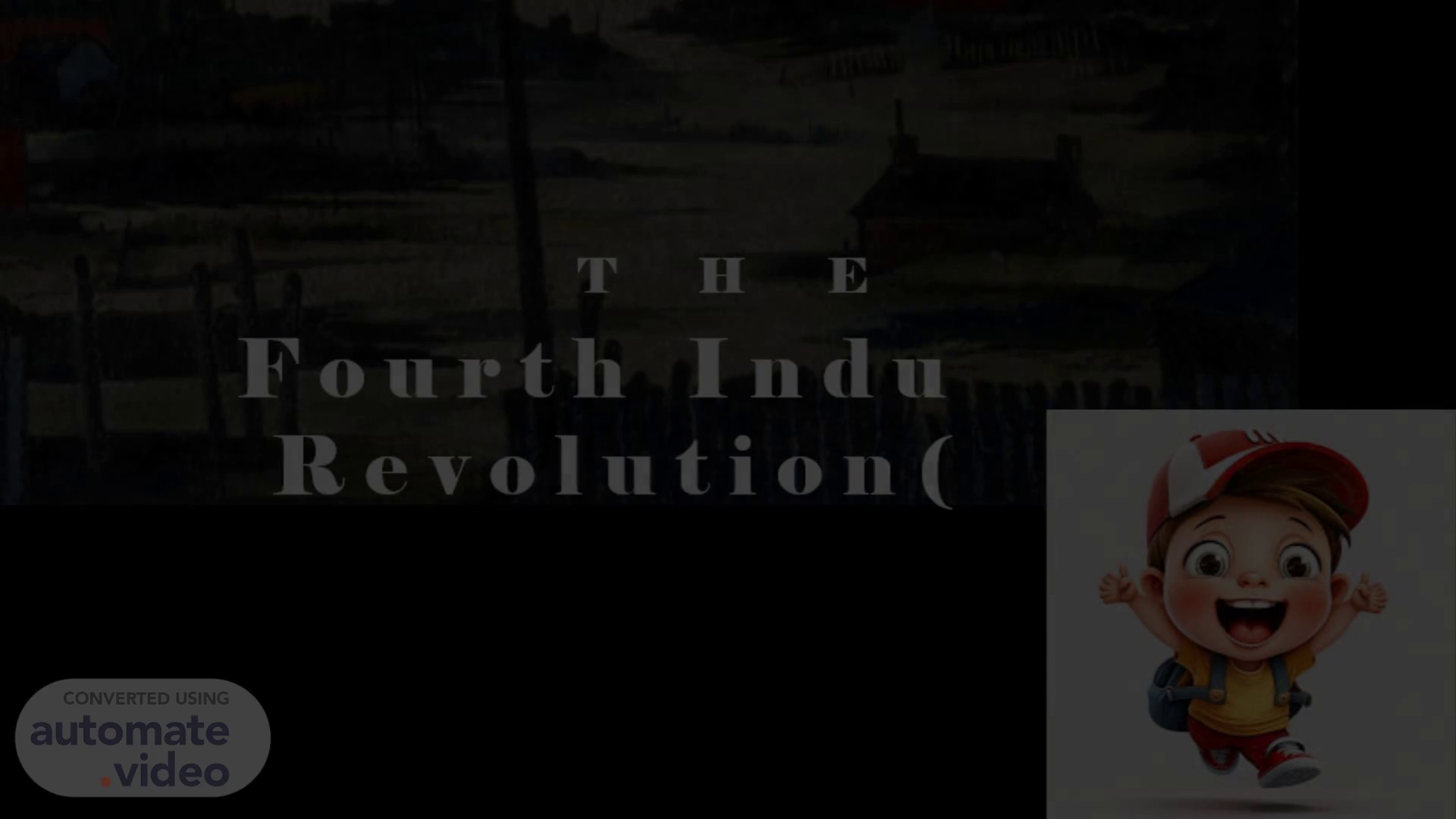
Page 1 (0s)
[image] LS Lowry the industrial revolution. THE. Fourth Industrial Revolution(4IR).
Page 2 (21s)
[image] LS Lowry the industrial revolution. THE. Fourth Industrial Revolution(4IR).
Page 3 (57s)
[Audio] In my presentation, I will only focus on how Industrial Revolution 1.0 to 4.0 has affected education and explain the timeline of each education phase..
Page 4 (1m 24s)
[Audio] Education 1.0, like the static nature of early websites, relied on a teacher-centered approach in which knowledge transmission was one-way, similar to the passive intake of content on Web 1.0 platforms. Students' access to uninteresting e-books and websites was limited, and the learning process lacked engagement and interactivity. The teacher was in charge, and pupils were merely passive recipients, unable to post comments, exchange content, or actively interact with the educational material. Education 1.0's traditional method provided a strict classroom environment, a structured curriculum, and an emphasis on rote memorization distinguished it. The goal of Education 1.0 is merely transmit established knowledge..
Page 5 (2m 13s)
[Audio] In 2003, Tim O'Reilly introduced the concept of Web 2.0, aiming to revolutionize websites into continuously evolving, user-driven platforms. Exemplified by platforms like Wikipedia, Web 2.0 highlighted collaborative content creation and regulation by users. Furthermore, Web 2.0 facilitated the integration of physical and virtual realms through innovative internet technologies, broadening educational possibilities for individuals across age groups. Education 2.0 underscored diverse interactions among students, teachers, content, and experts, facilitating global collaboration through synchronous and asynchronous communication. The "online world" of education allows students to actively engage with content, offering opportunities for comments, modifications, and social media interaction. This era, emerging during the industrial age, addressed mass education needs by adopting standardized curricula and leveraging technological advancements such as audiovisual aids and computers to enhance efficiency in learning, reflecting industrial principles of uniformity and effectiveness..
Page 6 (3m 25s)
[Audio] Web 3.0 enables the creation and documentation of entire civilizations based on thoughts, ideas, and perceptions. Web 3.0 is a "machine" unmistakably referring to "bots," which are computer programs that do certain duties in the absence of a human As a result, Web 3.0 knows Internet users' intentions based on data transmission context, and it streamlines and accelerates the acquisition of the information they want. According to this concept, education consists in personalized learning based on the student’s interests, innovation, and creativity. Thus, students themselves play a key role as creators of “knowledge artifacts” that are shared in online communities The role of the teacher has also evolved, no longer limited to imparting knowledge or guiding students in processing information. Instead, teachers now establish an educational environment that fosters collaborative learning among students. Another key aspect of "Education 3.0" involves a shift in content sharing, emphasizing that content should be freely accessible and modifiable by students. Lastly, the adoption of new technologies is integral to facilitating creative networking in the learning process..
Page 7 (4m 45s)
[Audio] Education 4.0 opens new possibilities as a result of deeper symbiotic, even emotional, contact between a human and a machine . This concept focuses on human enhancement and encourages humans to take control of the evolutionary process using technological knowledge in order to liberate the human species from biological limits. This paradigm shift places an emphasis on abilities rather than content, emphasizing critical thinking, creativity, teamwork, and flexibility. To improve the learning experience, Education 4.0 makes use of artificial intelligence, virtual reality, augmented reality, and the Internet of Things. The pedagogical approach shifts from teacher-centered to student-centered, emphasizing project-based learning and STEAM education (Science, Technology, Engineering, Arts, and Mathematics). Humanist principles are being blended into the digital realm as part of Education 4.0. In Education 4.0, we currently see the following patterns The use of Internet of Thing, Augmented Reality, Virtual Reality, Artificial Intelligence in practical class BYOD bring your own device gives students the choice how they want to study..
Page 8 (6m 5s)
[image] How does Industry 4 0 influence the border re opening.
Page 9 (6m 32s)
[image] Industrial Revolution ID Artcraft Digital Art Buildings Architecture City Industrial Architecture ArtPal.
Page 10 (6m 55s)
[image] 100 Professional Powerpoint Backgrounds Wallpapers com.
Page 11 (7m 26s)
[image] 100 Professional Powerpoint Backgrounds Wallpapers com.
Page 12 (7m 58s)
[image] 100 Professional Powerpoint Backgrounds Wallpapers com.
Page 13 (8m 26s)
[image] 100 Professional Powerpoint Backgrounds Wallpapers com.
Page 14 (8m 47s)
[image] 100 Professional Powerpoint Backgrounds Wallpapers com.
Page 15 (9m 6s)
[image] 100 Professional Powerpoint Backgrounds Wallpapers com.
Page 16 (9m 26s)
[image] 100 Professional Powerpoint Backgrounds Wallpapers com.
Page 17 (9m 45s)
[image] 100 Professional Powerpoint Backgrounds Wallpapers com.
Page 18 (10m 2s)
[image] 100 Professional Powerpoint Backgrounds Wallpapers com.
Page 19 (10m 35s)
[image] 100 Professional Powerpoint Backgrounds Wallpapers com.
Page 20 (11m 8s)
[image] Professional Black Wallpapers on WallpaperDog.
Page 21 (11m 49s)
[image] Professional Black Wallpapers on WallpaperDog.
Page 22 (12m 20s)
[image] Professional Black Wallpapers on WallpaperDog.
Page 23 (12m 54s)
[image] Professional Black Wallpapers on WallpaperDog.
Page 24 (13m 25s)
[image] Professional Black Wallpapers on WallpaperDog.